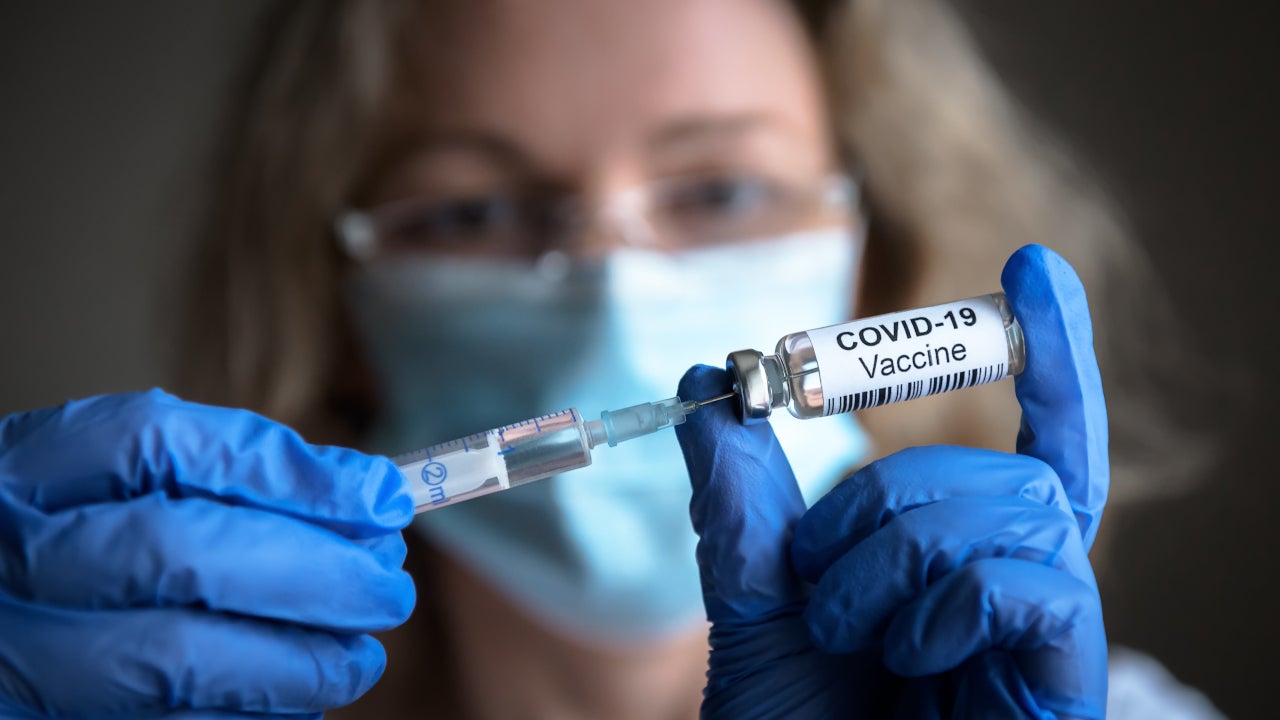Despite the theoretical potential of inactivated virus vaccines to offer a lead over other Covid-19 vaccine technologies against variants of concern, experts said they are unlikely to be a long-term solution. While it is logical that these vaccines could have better efficacy against variants that have mutations in the spike protein, they come with existing baggage such as relatively lower efficacy versus other Covid-19 vaccines, they noted. And though inactivated virus vaccines have an edge in initiating a T-cell response, the overall value of this mechanism is still unclear in the context of Covid-19 vaccine development, some added.
Recently discovered variants that are more infectious have thrown a wrench in the vaccine development race, owing to their potential to dampen the efficacy of the current crop of Covid-19 vaccines designed to target the original SARS-CoV-2. The three variants of concern were first detected in Brazil, South Africa, and the UK, respectively named P.1, B.1.351 and B.1.1.7.
According to 17 February news reports, São Paolo-headquartered Instituto Butantan head Dimas Covas said Sinovac Biotech’s CoronaVac’s advantage versus the variants of concern is that it uses an inactivated version of SARS-CoV-2. Immunobiologic and vaccine producer Butantan sponsored the Brazil-based Phase III CoronaVac trial. China state-owned Sinopharm’s BBIBP-CorV and India-headquartered Bharat Biotech’s Covaxin are the other authorized inactivated virus vaccines.
Adenovirus-vectored vaccines such as Johnson & Johnson’s JNJ-78436735 and the University of Oxford and AstraZeneca’s authorized AZD1222 have data showing their vaccines are negatively impacted by B.1.351. These vaccines could improve their efficacy against the variants of concern by adding other antigens on top of the spike protein, some noted. However, experts agreed this may not be a realistic option, as it would complicate production lines and increase manufacturing costs, without the guaranteed efficacy benefit.
The aforementioned companies and institutions did not respond to a comment request, while Sinopharm could not be reached.
Logical at surface level but many caveats underneath
It is possible that an inactivated virus vaccine may induce a broader immune system response than vaccines that only feature the spike protein, said Stanley Perlman, professor, Department of Microbiology and Immunology, University of Iowa. Since the existing variants of concern have critical mutations in the spike, inactivated virus vaccines could theoretically offer an advantage for protection against these variants, added Dr Diane Griffin, Department of Molecular Microbiology and Immunology, Johns Hopkins Bloomberg School of Public Health, Baltimore, Maryland.
How well do you really know your competitors?
Access the most comprehensive Company Profiles on the market, powered by GlobalData. Save hours of research. Gain competitive edge.

Thank you!
Your download email will arrive shortly
Not ready to buy yet? Download a free sample
We are confident about the unique quality of our Company Profiles. However, we want you to make the most beneficial decision for your business, so we offer a free sample that you can download by submitting the below form
By GlobalDataButantan’s Covas announced CoronaVac is effective against B.1.351 and B.1.1.7, citing China-based results, while investigations against the local P.1 variant are ongoing. B.1.1.7 is characterised by a deletion in the spike protein, while there is a spike mutation in P.1 and B.1.351. Vaccine developers have been most interested in B.1.351 owing to preclinical and clinical trial data showing it can weaken vaccine efficacy. 23 February news reports show Bharat chairman and managing director Krishna Ella said the company can re-engineer its Covaxin vaccine within 15 days once it can access an isolated strain of B.1.351.
Also potentially supporting inactivated virus vaccines is that natural infection may lead to better protection from reinfection than vaccines, noted Gary Kobinger, PhD, head, Vector Design and Immunotherapy Special Pathogens, Medical Microbiology, University of Manitoba, Canada. This is due to the immune system developing familiarity to the viral life cycle that a vaccine that only carries a single antigen is not able to offer, Kobinger explained. Other SARS-CoV-2 proteins may be better geared to trigger a T-cell response, where the immune system recognises infected cells, noted Alan Parker, PhD, reader in virology, School of Medicine, Cardiff University. In contrast, neutralising antibodies defuse the virus itself, Parker added.
Dr Maria Elena Bottazzi, associate dean, National School of Tropical Medicine, Baylor College of Medicine, Houston, Texas, differed, noting a vaccine featuring a specific antigen is likely to be superior to natural infection, as the vaccine elicits a targeted immune response. And so, inactivated virus vaccines’ broader immune response may not necessarily translate to a boost in vaccine efficacy, even against variants of concern, Perlman noted.
While initiating a T-cell response is ideal, neutralising antibody increase seems to be most relevant to COVID-19 vaccines, Perlman added. Even if there is a vaccine-triggered T-cell upsurge, the person can still develop symptoms if neutralising antibodies are not generated, agreed Nikolai Petrovsky, PhD, professor, College of Medicine and Public Health, Flinders University, Adelaide, Australia. Neutralising antibody data from inactivated virus vaccines are not as high as other vaccine technologies that only feature the spike, Bottazzi noted.
But Kobinger was more cautious, noting the value of neutralising antibody increase should not be overestimated. In Ebola, there is a very weak link between neutralising antibodies to protection, he added. Sinopharm’s BBIBP-CorV appears to trigger slightly lower neutralising antibody titres against B.1.351 compared with the original SARS-CoV-2, according to a laboratory study using 12 serum samples from vaccinated individuals (Huang, B, et al., BioRxiv. doi: https://doi.org/10.1101/2021.02.01.429069).
Further dampening enthusiasm for inactivated virus vaccines to combat variants of concern is that their efficacy profile against the original SARS-CoV-2 is still unclear, added Kobinger. Efficacy data from other COVID-19 vaccines, particularly with mRNA vaccines, show that focusing on a single part of SARS-CoV-2 may be the best approach, experts agreed. Moderna’s and Pfizer/BioNTech’s two-dose mRNA vaccines mRNA-1273 and Comirnaty (BNT162b2), respectively, have efficacy north of 94%.
On the other hand, inactivated virus vaccines’ efficacy has generally been lower, though cross-trial comparisons come with inherent caveats. Sinovac’s CoronaVac efficacy in three clinical trials with data was 50.4% (Brazil), 65.3% (Indonesia) and 91.25% (Turkey). Sinopharm’s BBIBP-CorV showed 79% interim efficacy (China-based registrational trials) and 86% (UAE). Bharat is yet to report Phase III (CTRI/2020/11/028976) Covaxin protection data; it garnered “clinical trial mode” emergency use authorisation in India in early January.
There is, however, head-to-head trial data from an influenza vaccine trial demonstrating that having excess epitopes in an inactivated virus vaccine does not lead to better efficacy, Petrovsky noted. In a Phase III trial, Sanofi’s Flublok, which only features recombinant hemagglutinin, demonstrated 30% lower probability of influenza-like illness than whole inactivated virus vaccine IIV4 (p=0.006; Dunkle, L, et al., N Engl J Med. 2017.Jun 22;376(25):2427-2436). And even if a vaccine features the whole SARS-CoV-2, mutations do not just happen in the spike protein but everywhere in the virus, Bottazzi added.
A possible side effect concern with inactivated virus vaccines is enhanced disease when a vaccine receiver is infected, Griffin said. And so, a vaccinated person who gets infected can develop an inflammatory condition called immune complex disease, she explained.
Adenovirus vectors large enough for additional viral proteins
While adenovirus-vectored vaccines’ efficacy seems to be prone to variants of concern, there are ways for the technology to potentially bolster their efficacy profiles. For example, the SARS-CoV-2 nucleoprotein could be added as it is better conserved than the spike protein, Kobinger said. In addition, the nucleoprotein is the second most immunogenic target based on experience with SARS-CoV vaccine development, he added.
Adenoviruses are large enough to fit in many SARS-CoV-2 proteins, as adenoviruses can fit in as many as 36,000 bases, added Parker. Besides spike and nucleocapsid proteins, SARS-CoV-2 has envelope and membrane proteins.
JNJ-78436735 and AZD1222 only feature the spike protein. A 7 February University of Oxford media statement shows two-dose AZD1222 provides minimal protection against mild-to-moderate COVID-19 from B.1.531. Due to this, South Africa’s vaccine rollout of AZD1222 was put on hold in favour of JNJ-78436735.
But even JNJ-78436735’s efficacy seems to have been affected by the new variant. In the South Africa cohort of the Phase III ENSEMBLE trial, single-dose JNJ-78436735 had 57% efficacy in protection against moderate-to-severe COVID-19, which was 72% in the US cohort and 66% in the Brazil cohort, according to a 29 January media release. Some 94.5% of cases in the South Africa cohort were due to B.1.531, according to Johnson & Johnson’s briefing document for today’s (26 February) FDA advisory committee meeting.
But putting in two to three different SARS-CoV-2 proteins does not guarantee higher immune responses against all these proteins, Parker added. The immune system may favourably pick one protein to develop an immune response against, he noted. Protective immunity for the host will be against the spike, as it is the most relevant protein for viral entry, Bottazzi noted. Other SARS-CoV-2 viral proteins are more relevant in replication, she explained. The spike protein was chosen because it is immunodominant and the immune system can recognise it, Parker added.
Also, having more than one antigen in a vaccine is uncommon, as it adds another level of complexity in manufacturing, Petrovsky said. Such complexity would impact production efficiencies and increase production costs, while the efficacy benefit is nebulous, he added.
As for mRNA vaccines, both Moderna and Pfizer/BioNTech announced this week Phase I investigations to add a third dose to address B.1.351. Moderna’s mRNA-1273.351 is also under consideration as part of a two-dose approach, where the booster would be mRNA-1273.211, which combines the original and new vaccine permutations. Adenovirus-vectored vaccines would be at a disadvantage during a potential revaccination campaign due to likely antivector responses triggered by initial vaccinations, this news service reported 12 February.
Reynald Castaneda is an Associate Editor for Clinical Trials Arena parent company GlobalData’s investigative journalism team. A version of this article originally appeared on the Insights module of GlobalData’s Pharmaceutical Intelligence Center. To access more articles like this, visit GlobalData.









Related Company Profiles
Pfizer Inc
Johnson & Johnson
Sinopharm Group Co Ltd
Sanofi
AstraZeneca Plc